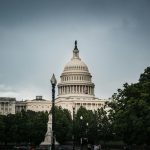budget impasse
Congress and Agencies Continue Operations Amidst Budget Impasse
Discover how federal operations persist despite ongoing budgetary disagreements, impacting workers and public services.
Congress and Agencies Continue Operations Amidst Budget Impasse
Navigating the Budget Impasse: A Shifting Landscape
When federal funding lapses, the term “government shutdown” often conjures images of empty offices and halted services. However, the reality for many federal agencies and on Capitol Hill can be far more nuanced. This article delves into how essential functions often continue, even as a budget impasse creates uncertainty for thousands of federal employees and impacts various sectors.
Understanding the Mechanics of a Shutdown
A government shutdown occurs when Congress fails to pass appropriations bills, leading to a lapse in funding for federal agencies. This doesn’t necessarily mean all government operations cease immediately. Critical services, such as national security, air traffic control, and essential healthcare, are typically deemed necessary and continue to operate under specific legal frameworks.
The “Non-Essential” Designation: A Contentious Point
The distinction between “essential” and “non-essential” personnel is a key factor determining who continues working and who is furloughed. This classification can be a source of significant debate and can lead to thousands of federal workers going without paychecks, even if their agency’s core functions remain operational. The economic ripple effects of unpaid workers can extend far beyond Washington D.C.
Impact on Capitol Hill and Federal Operations
While the public often sees the most visible effects of a shutdown, the day-to-day operations within Congress and many federal departments can appear remarkably normal. This is largely due to contingency plans and the nature of legislative work.
Legislative Momentum Persists
Congress often finds ways to continue with its legislative agenda, holding hearings, debating bills, and engaging in oversight activities. While some committee work might be curtailed, the core functions of lawmaking generally proceed. This can create a disconnect between the struggles of furloughed workers and the ongoing political discourse.
Agency Contingency Plans
Federal agencies are required to have contingency plans in place to manage funding lapses. These plans outline which activities must continue to protect life and property and ensure the orderly function of the government. This allows many administrative and support functions to continue, albeit often with reduced staff and resources.
Key Areas Affected by a Budget Impasse
Despite contingency plans, certain areas are invariably impacted, leading to disruptions and public concern.
Federal Workers and Their Families
The most direct impact is on federal employees who are furloughed. They do not report to work and are not paid during the shutdown. While back pay is often eventually authorized, the immediate financial strain can be severe.
Public Services and Delays
While essential services continue, non-essential public services can experience significant delays or suspensions. This might include passport processing, national park operations, and certain research initiatives. The cumulative effect can lead to frustration and economic consequences for businesses and individuals relying on these services.
Economic Repercussions
The budget impasse can have broader economic effects. Reduced federal spending, delayed payments, and the uncertainty surrounding the shutdown can dampen consumer confidence and impact industries that rely on government contracts or services.
Looking Ahead: Resolution and Recovery
Resolving a government shutdown typically involves complex negotiations between the executive and legislative branches. The path to a resolution can be lengthy and politically charged.
The Role of Continuing Resolutions
Often, a Continuing Resolution (CR) is passed to temporarily fund the government and avert a shutdown. These are short-term measures that provide a bridge to a more permanent funding agreement.
The Path to a Full Appropriations Bill
The ultimate goal is the passage of full appropriations bills, which provide detailed funding for all federal agencies for the upcoming fiscal year. This process requires compromise and agreement on spending priorities.
Conclusion
The persistence of government operations during a budget impasse highlights the intricate mechanisms designed to maintain essential functions. However, the human cost for federal workers and the disruption to public services remain significant concerns. Understanding these dynamics is crucial for navigating the complexities of federal funding and its impact on the nation.
budget impasse, government funding, federal workers, appropriations, congressional budget, furloughed employees, essential services, continuing resolution, budget negotiations
budget-impasse-government-operations-continue
Federal agencies and Congress often find ways to continue operations during a budget impasse, but the impact on federal workers and public services can be substantial. Learn how essential functions persist and the challenges faced during funding lapses.
budget impasse, government shutdown, federal agencies, congress, appropriations, furloughed federal workers, essential government services, budget negotiations, continuing resolution, public sector impact









